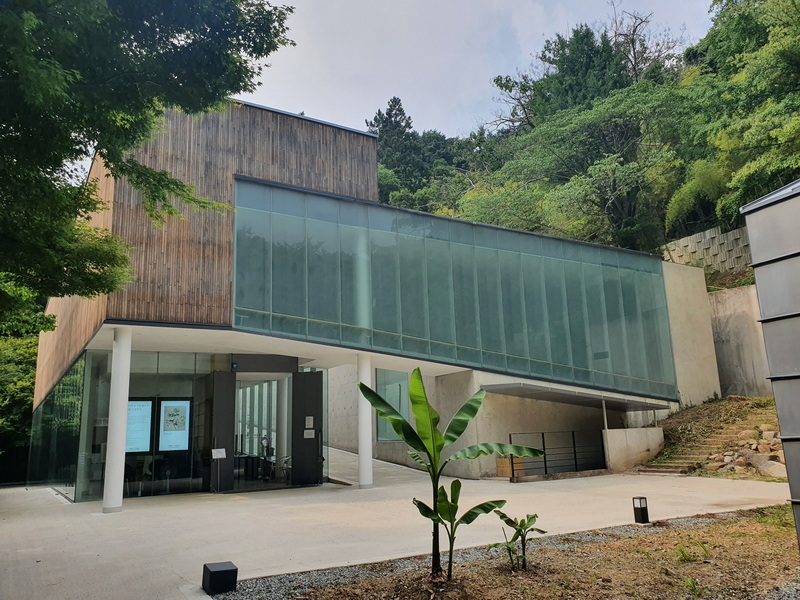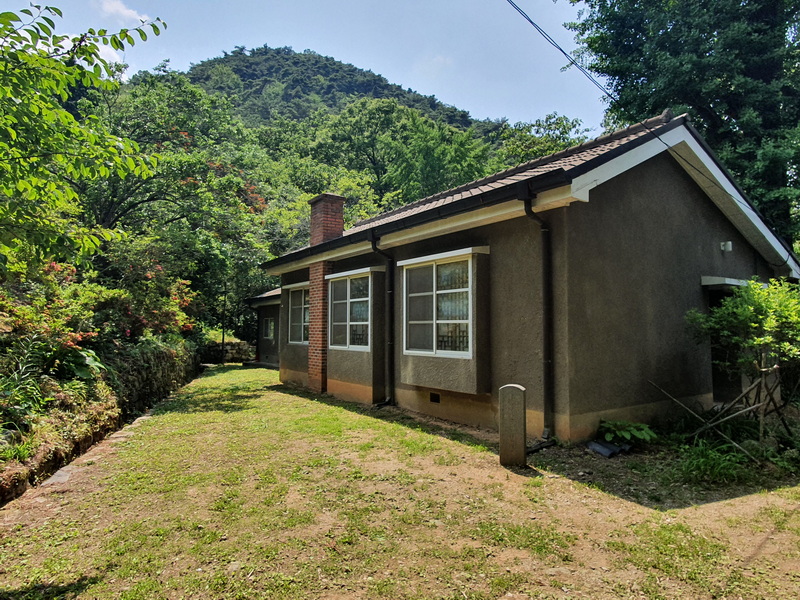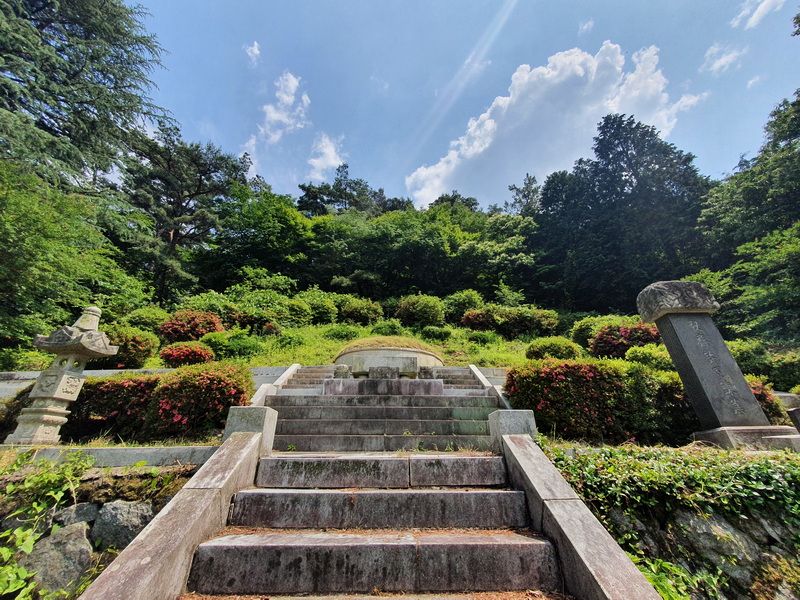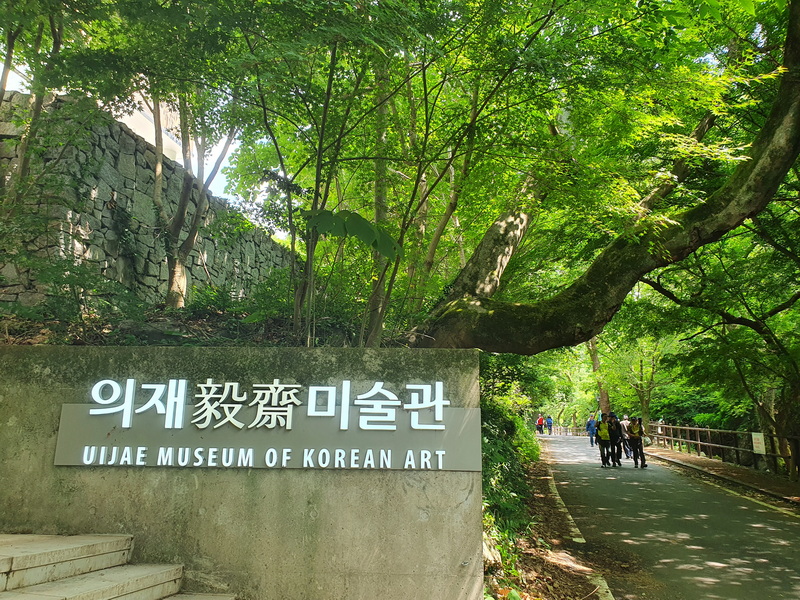Art on the Mountain
By Nicky Archer
Not only is Mudeungsan National Park a feast for the eyes and a burn on the thighs, but nestled within it lies an artistic delight: the works of Heo Baek-ryeon (허백련). A prolific Korean artist highly talented in painting, calligraphy, and poetry, he is regarded as one of the last masters of Korean Scholar painting.
Born on Jindo Island, South Jeolla Province, Heo Baek-ryeon (1891–1977), better known by his pen name, Uijae (의재), became a master of his craft at an early age, studying under the great calligraphy master Kim Jeong-hui (김정희). Uijae won countless awards and exhibited widely. Despite his success as one of the best Scholar-painters of the 1920s, arguably he produced his best catalog of works later, after he moved to Gwangju.

Retreating into the honest and harmonious mountainside of what is today Mudeungsan National Park, he was truly inspired. He painted and taught often, continuing to be guided by his principles and philosophy of “love for Heaven, love for earth, and love for people.”
You can explore his works at the Uijae Museum of Korean Art (의재미술관). Make your way uphill, over the red barricade, towards the Jeungsimsa Temple and, just past it, you will notice a sloping white building embedded into the landscape to the left.
Opened to the public since 2001, the Uijae Museum of Korean Art was established by the Uijae Foundation and Gwangju City Council, with the hope that it would become a place where his works could be celebrated and brought back to life. With three gallery spaces in the museum, the permanent collection resides upstairs in the darkened gallery space. With works lit from behind, a real sense of intimacy is created. In contrast, downstairs is a large, open, airy space that currently exhibits some beautiful paintings by his grandson, Jikheon Heo Dal-jae (직헌 허달재). His paintings of cherry and plum blossom trees are done on an impressively large scale, with each blossom individually and meticulously placed. His work modernizes the more traditional style you can see in the remainder of the main exhibition, just up from where you enter the museum.

Running until the 14th of August 2022, Flowers and Birds Mingle (꽃과 새가 어울린 자리) is a thought-out collection including works by Heo Baek-ryeon and his younger brothers Mokjae Heo Haeng-myeon (목재 허행면) and Seonggwan Heo Jeong-du (성관 허정두), making it a real celebratory family affair. It is a delicate array of decorative paintings which mixes traditional East Asian painting techniques and broad brush strokes. These decorative works include varying flowers and plants such as plum blossoms, peonies, and daffodils. Used symbolically to express the seasons changing, they are truly elegant. The detailed fine lines and subtle use of color and imagery made this my personal favorite section.
Entering the museum costs 2,000 won for adults – an absolute steal! A nice way to extend your museum visit is to purchase a 5,000-won ticket upon entering. As well as admission, that gets you a refreshing cup of green tea and some small, traditional Korean sweet baked treats to enjoy either before or after perusing the art. As Uijae was an avid tea drinker himself, I think he would have approved, too!

With refreshments taken care of, you can further explore some hidden cultural relics of Uijae Heo Baek-ryeon just across from the museum itself. If you go through the gate opposite and cross the bridge, you will see the old teahouse and watermill. It was once a place where you could learn about the art of tea making and the traditional Korean tea ceremony process, which was also a big part of Uijae’s life, but unfortunately, the building has been closed since 2015. With no plans to reopen the building, it is somewhat abandoned and left to get overgrown, so there is not much to see. Following the path to the left, up some steps you will find the house in which he spent the last 20 years of his life, painting and teaching his craft. You cannot enter the house, but it is enshrouded in a rich canvas of trees and plants, so you can imagine how he must have enjoyed a peaceful, simple life there, reborn in Gwangju as an Enlightenment thinker.
Keep meandering slightly upwards through a little wooded area alongside the winding bamboo, and underneath some pretty maple leaves you will reach his gravesite, which looks out towards Janggun Peak. At the foot of the steps, when in season, you can see some pink evergreen azalea flowers blooming, too.
A mountain trek it is not. Taking approximately 30 minutes to walk from the museum’s doorstep to Uijae’s tombstone and back, the walk itself should probably not be the main focus of your visit. However, it is an enjoyable, relaxing way to extend your time in the area. A chance to absorb and imagine the life that once was. To walk amongst the very nature that Uijae immersed himself in, after having seen it reflected in his paintings, brought his work to life even more for me. If you are lucky, you might even get to see some of the birds that he captured in some of his paintings, fluttering above the ferns as you tread the stony footpath to his gravesite.

However, if flower and bird paintings are not your cup of tea, the next temporary exhibition will be more landscape focused, prioritizing mountains, rivers, and streams as seen in traditional Korean landscape art. Showcasing the work of Uijae and his students, the exhibition is currently scheduled to begin in September 2022.
For me, the highlight was seeing the artists’ work in situ at the gallery and having a chance to walk in the landscape that inspired him. It was a pleasant afternoon where I could take my time to soak up some traditional Korean art, learn about Uijae, and indulge my imagination. So, if you find yourself with a spare morning or afternoon, take the opportunity to re-appreciate the beauty and power of nature and art.
The Author
Nicky Archer is an ESL teacher and animal rights campaigner from the UK. She is a foodie, art enthusiast, and somewhat of an adrenaline junkie. Living in Gwangju, she enjoys coffee shop hopping, mountain hiking, and learning new things.





